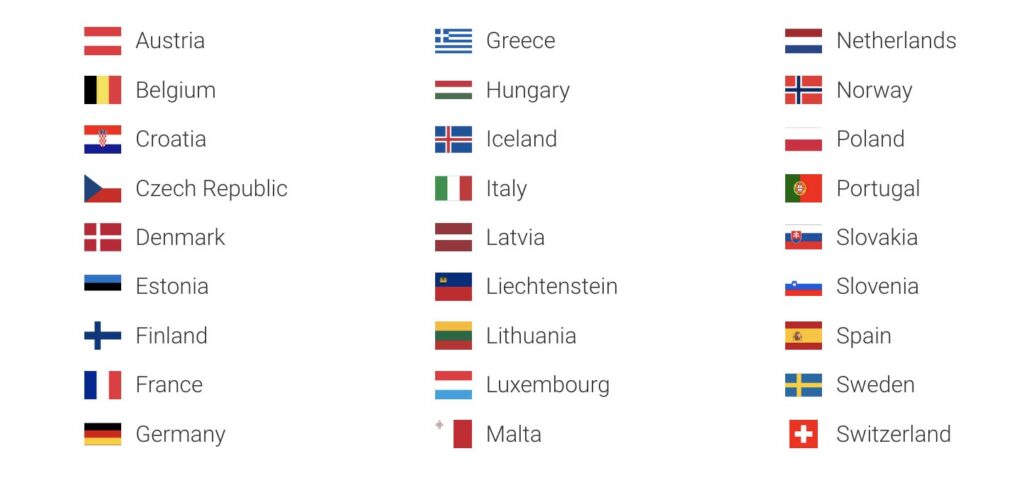
Comprehensive Guide to the Schengen Visa
Introduction
The Schengen Visa is a gateway to experiencing Europe in all its diversity and beauty. This visa allows travelers to visit multiple countries within the Schengen Area without the need for separate visas for each nation. Whether you’re planning a European vacation, business trip, or visiting family, understanding the Schengen Visa process is crucial. In this blog, we will cover everything you need to know about the Schengen Visa, from the application process to tips for a successful trip.

What is the Schengen Visa?
The Schengen Visa is a short-stay visa that allows travellers to visit any of the 27 Schengen countries for up to 90 days within a 180-day period. This visa is ideal for tourism, business, or family visits. The Schengen Area comprises most of the European Union (EU) countries, along with a few non-EU members.
List of Schengen Countries:

Types of Schengen Visas
There are several types of Schengen Visas, depending on the purpose of the visit:
- Uniform Schengen Visa (USV): This is the most common type, allowing travel within the entire Schengen Area.
- Limited Territorial Validity Visa (LTV): This visa is valid only in the Schengen states specified at the time of application.
- National Visa: For those who need to stay longer than 90 days, typically for work, study, or residency.
How to Apply for a Schengen Visa
Step 1: Determine Where to Apply
You should apply at the consulate or embassy of the country that is your main destination. If there is no main destination, apply at the consulate of the country you will enter first.
Step 2: Gather Required Documents
- Application Form: Complete and sign the Schengen Visa application form.
- Passport: Valid for at least three months beyond your intended departure date.
- Photographs: Two recent passport-sized photos.
- Travel Itinerary: Detailed plan of your trip, including flight and accommodation bookings.
- Proof of Financial Means: Bank statements, payslips, or a letter from your employer.
- Purpose of Visit: Depending on your reason for travel, this could include invitation letters, conference registrations, or proof of study.
Step 3: Schedule an Appointment
Schedule an appointment at the consulate or visa application center. It’s advisable to book your appointment well in advance, especially during peak travel seasons.
Step 4: Attend the Appointment
Attend your appointment with all required documents. Be prepared to answer questions about your trip. You will also need to provide biometric data (fingerprints and a photograph).
Step 5: Pay the Visa Fee
The standard Schengen Visa fee is €80 for adults and €40 for children between 6 and 12 years old. Certain categories, such as students and researchers, may be exempt from fees or eligible for reduced rates.
Step 6: Wait for Processing
Visa processing typically takes 15 calendar days, but it can take longer in some cases. It’s important to apply well in advance of your planned travel dates.
Tips for a Successful Application
- Be Honest: Provide accurate and truthful information. Any discrepancies can lead to visa denial.
- Double-Check Requirements: Each country may have specific requirements, so ensure you’ve gathered all necessary documents.
- Show Strong Ties to Your Home Country: Demonstrating that you have reasons to return home (job, family, property) can strengthen your application.
- Prepare for the Interview: Be ready to discuss your travel plans and answer any questions the consulate officer might have.
Post-Visa Approval
Traveling to the Schengen Area
Once you receive your Schengen Visa, check the visa details carefully to ensure all information is correct. When traveling, carry copies of your visa and all the documents you submitted during your application process.
During Your Stay
- Adhere to the Rules: Stay within the duration allowed by your visa and respect the conditions of your stay.
- Travel Freely: You can travel freely between Schengen countries without additional border checks, but always carry your passport and visa.
Extending Your Stay
If you need to extend your stay beyond the 90-day limit, you must apply for an extension at the immigration authorities in the country where you are staying. Extensions are granted only under exceptional circumstances, such as medical emergencies.
Conclusion
Obtaining a Schengen Visa opens the door to a rich and varied European experience. By understanding the application process and preparing thoroughly, you can enhance your chances of a successful application. With your visa in hand, you can explore the historical landmarks, diverse cultures, and stunning landscapes that Europe has to offer. Happy travels!

Related posts
-
In difficult times, fashion is always outrageous.
Lorem ipsum dolor consectetur adipiscing elit finibus purus..
-
We must never confuse elegance with snobbery.
Lorem ipsum dolor consectetur adipiscing elit finibus purus..
-
Elegance is not standing out, but being remembered.
Lorem ipsum dolor consectetur adipiscing elit finibus purus..


